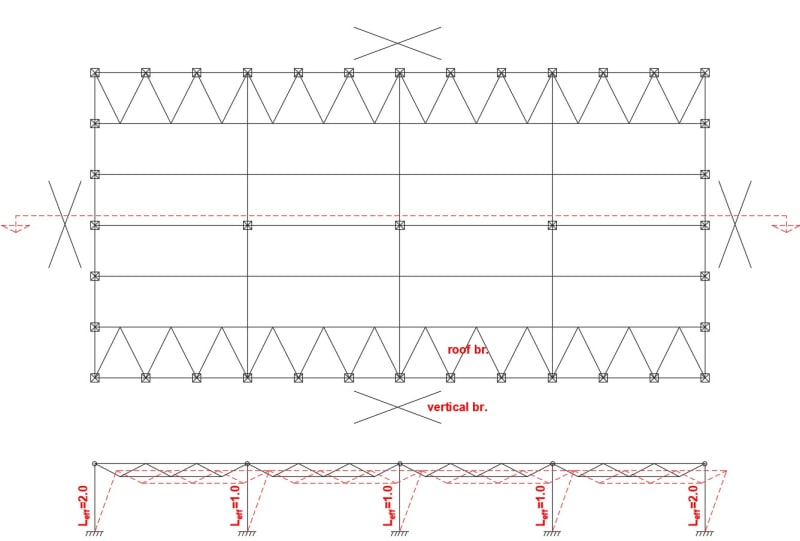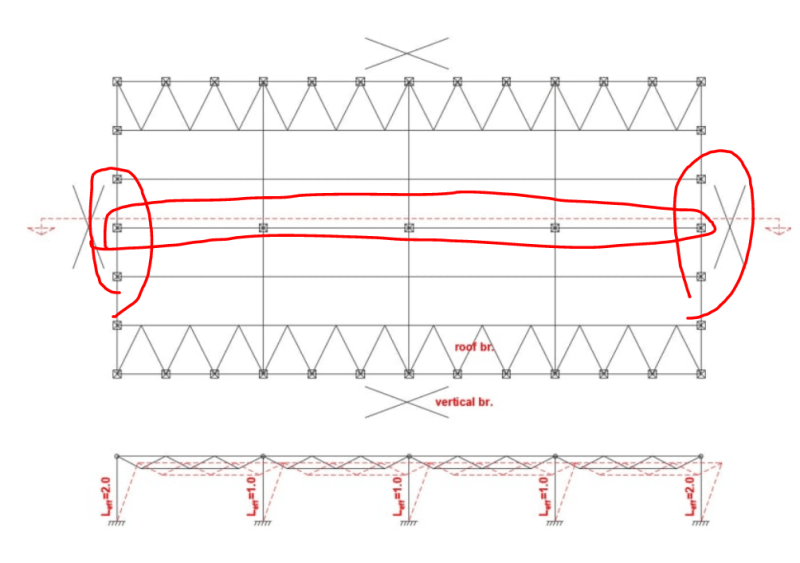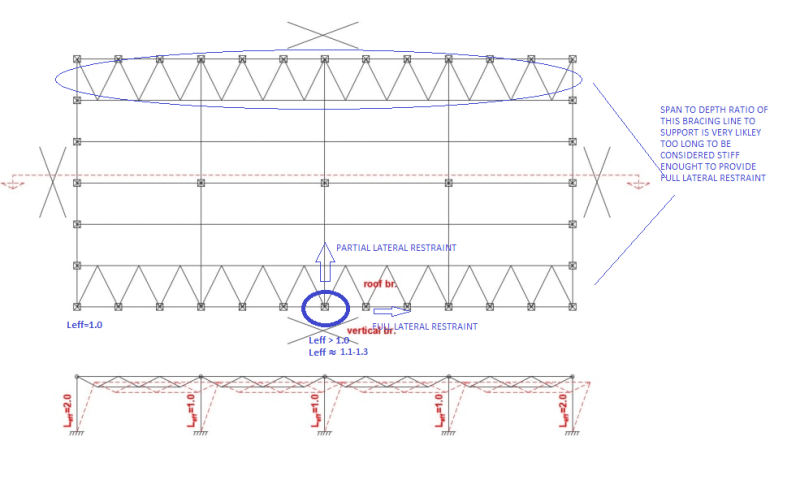struc_eng
Structural
- Mar 24, 2017
- 11
Hi all,
I recently came across a question about column effective length in unbraced multi-frame system.
Building has a vertical wind bracing in all four planes and triangle bracing system in roof only on two opposite sides. Section view which describes situation is something like in attached picture. Columns are fixed with hinges in connection with trusses. In my opinion in direction where is no roof bracing column effective length is as fixed with free end (Leff=2.0). But what happening with columns in middle spans, Leff should be the same as for external columns or it's 1.0 ? Is there any reference to normatives ? Thank you and any comments are welcome.
I recently came across a question about column effective length in unbraced multi-frame system.
Building has a vertical wind bracing in all four planes and triangle bracing system in roof only on two opposite sides. Section view which describes situation is something like in attached picture. Columns are fixed with hinges in connection with trusses. In my opinion in direction where is no roof bracing column effective length is as fixed with free end (Leff=2.0). But what happening with columns in middle spans, Leff should be the same as for external columns or it's 1.0 ? Is there any reference to normatives ? Thank you and any comments are welcome.

![[pipe] [pipe] [pipe]](/data/assets/smilies/pipe.gif)



![[smile] [smile] [smile]](/data/assets/smilies/smile.gif)
![[thumbsup2] [thumbsup2] [thumbsup2]](/data/assets/smilies/thumbsup2.gif)